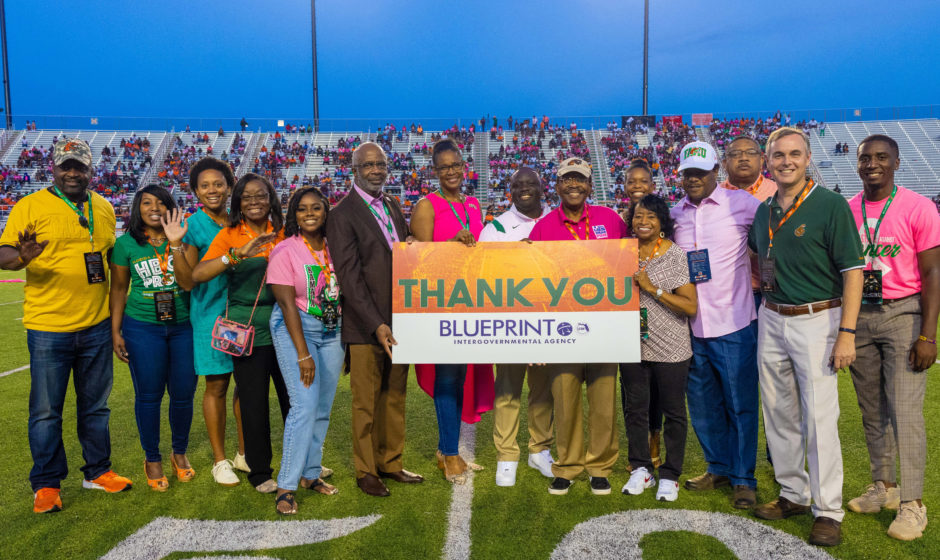FAMU Recognizes Blueprint Intergovernmental Agency Members For Their Support of Renovations At Bragg Memorial Stadium

Florida A&M University (FAMU) recognized Blueprint Intergovernmental Agency (IA) Board members for their support of the renovation of Bragg Memorial Stadium during the home game against South Carolina State University Saturday.
Leon County Commissioners Carolyn Cummings, Bill Proctor and Commission Chair Rick Minor, and Tallahassee City Commissioners Dianne Williams-Cox and Curtis Richardson appeared on the field at the end of the second quarter alongside FAMU President Larry Robinson, Ph.D., his wife Sharon and FAMU Board of Trustee members Vice Chair Kim Moore, Chairman Kelvin Lawson, Nicole Washington, Student Government Association President Carrington Whigham and others.
“As a proud alumna, I was proud to lead the effort for the $10 million to renovate Bragg Stadium,” said Williams-Cox. “A year later, I am still proud of that fact, and proud of what is being done for the safety and quality of life for this community jewel, that is Bragg Stadium.”
The recognition is in appreciation of the Agency’s $10 million grant to help finance repairs and upgrade for Bragg Memorial Stadium. The first phase of Bragg Stadium project focused on safety improvements, which included replacing all steel pans and seats on the east or visitors’ side and restoration of existing structure of the new grandstands. Renovation of the west side or home side of the stadium begins next year. Improvements expected include a new press box and a new west side grandstand.
The IA Board, comprised of the City of Tallahassee and Leon County Commissions, sitting as one body, provides direction to the Agency, which operates under the guidance of the Intergovernmental Management Team – the county administrator and the city manager.
“We’re proud to support FAMU in moving forward with these essential renovations to Bragg Stadium,” said Minor. “FAMU is an integral part of this community… when the university is thriving, Tallahassee is thriving. Go Rattlers!”
The Blueprint Intergovernmental Agency has been at the helm of the community’s most pressing infrastructure needs, based on a concept of holistic infrastructure planning and community redevelopment. The program promotes multi-use corridors, park-like regional stormwater facilities for water-quality protection, alternative transportation, passive recreation, and wildlife-habitat preservation as it builds the infrastructure the community envisions.



